People of the U: Deepti Patki
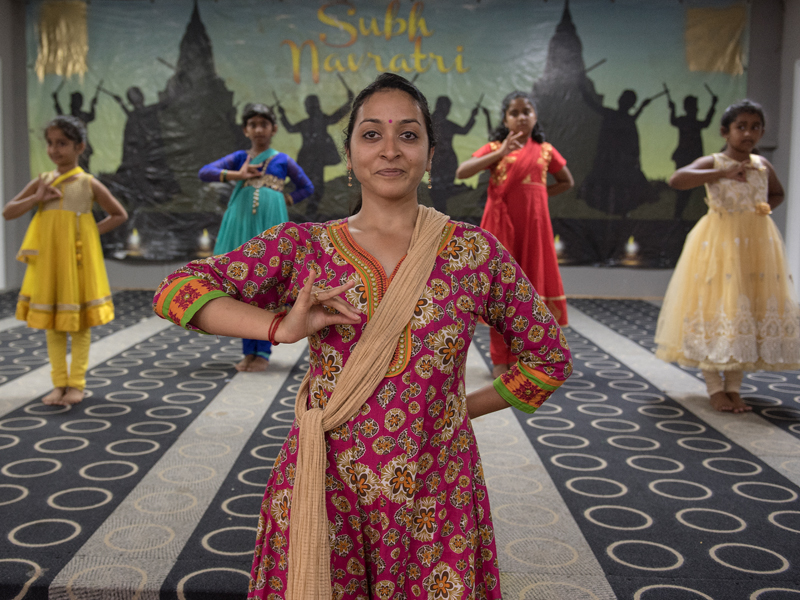
Growing up in her native India, Deepti Patki learned to tell a story through dance.
As a 5-year-old, she watched on television as women in traditional, colorful Indian costume made graceful hand and body movements to convey different forms of classical dance, originating in different parts of India and often rooted in Hindu mythology.
“I was in the room with her,” remembered her big sister, Gouri Mahajan, now a scientist in the Medical Center’s Department of Psychiatry. “You could tell she had a passion for it. I said to her, ‘Deepti, you are watching this with so much interest. I didn’t know you liked it that much.’
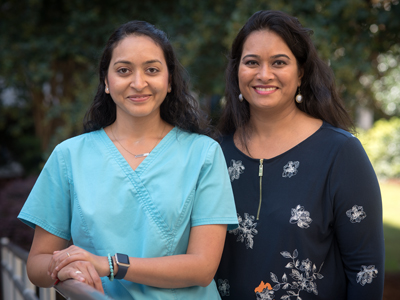
“She told me, ‘Yes, I want to learn it so badly.’”
“My mom had so many responsibilities,” Mahajan said. But even so, she said, their mother resolved with Gouri’s help to find Deepti the right teacher, known in India as a professional dance guru.
Patki, clinical research coordinator for the Department of Emergency Medicine, is paying it forward to honor those who made it possible for her to master the art of classical Indian dance. Since coming to this country in 2008 to continue her education, she has performed in festivals at local Hindu temples, both in Texas and in Mississippi.
And, she gives back by teaching children of Indian descent in the metro Jackson community a part of their heritage that has roots halfway around the globe.
Patki is their guru.
“I went through 10 or 15 years of training, and then gave a long solo performance,” said Patki, who lives in Brandon. “That’s when your teacher or mentor says that you are ready to give performances and to teach. Before that, you’re not considered ready to teach.”
Patki attended graduate school at the University of North Texas, where she received a master of science in clinical research management.
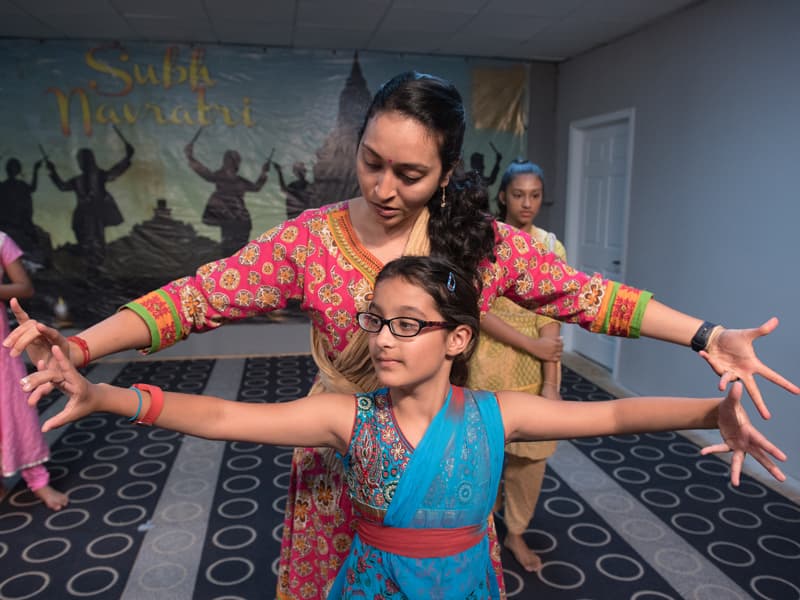
While in the Dallas area, she said, she was heavily involved in the Indian community and took part in classical dance. “I gave a lot of performances at the university where I was working, and we had a lot of festivals and celebrations,” she said.
She came to UMMC in 2012 after her husband, Shantanu Godbole, took a job at the Medical Center. Patki again became involved in the Indian community and classical Indian dance.
“Teaching is something I’ve always wanted to do to give back,” Patki said. “Kids here and their parents really want to stay in touch with this art form.”
When she watches her sister dance, Mahajan said, “I cannot see anything else in the room.
“It’s absolute joy to watch her,” Mahajan said. “The dance has a lot of acting in it, and you can tell any mythological story. You can tell it in her dance. You can see it on her face.”
Patki teaches children ages 5-14 on weekends, either at her home or the Hindu temple in Brandon. “I really enjoy molding them,” she said. “They are eager to learn, and it keeps me in touch with the art, too. It’s challenging at times, because we’re in the United States and they are American kids of Indian origin. Their family is on the other side of the globe.”
Mahajan’s daughter, 13-year-old Vaibhavi, is one of Patki’s students.
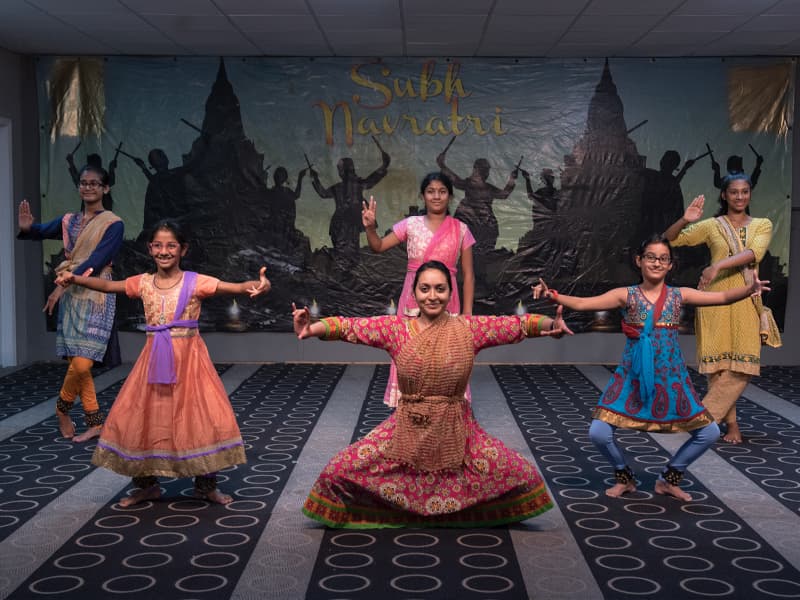
“I always wanted my daughter to learn from Deepti. I wanted her to instill her passion,” said Mahajan, 45, who manages the postmortem brain core in Psychiatry’s Division of Neurobiology and Behavioral Research. “It just so happens we are living in the same town, so it worked out beautifully.”
But she let her daughter, who already is learning jazz, ballet and hip hop, make the decision to be Patki’s student. “She likes it, but she said that Deepti is very strict. I’m happy about that, because that’s the way a dance teacher should be,” Mahajan said.
Every year, Patki said, her students perform at the temple. “We have programs for the community, and we have so many festivals,” she said. “Every year, we try to celebrate a spring festival in March or April, and we also have a fall festival. I perform there, and ‘my kids’ also give a performance.”
Her students learn the rich history of Indian classical dance. “There are five forms from different regions in India,” Patki said. “The dance form I teach is from the south of India – traditionally, what we call temple dance. They dance in praise of one of the many gods of Hindu.”
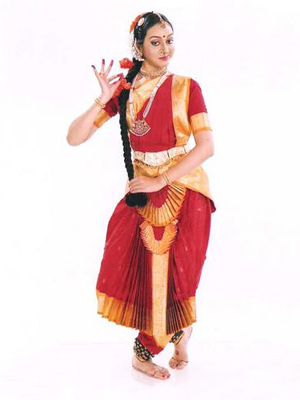
Years ago, she said, scholars in the field of Indian classical dance brought the art form to the public so that dancers could tell stories or praise one of the gods, Patki said. “A lot of our dance has an impact in Hindu mythology. That doesn’t mean it’s for Hindus only, but that’s where it started.”
The dance form calls for intricate costumes and “is a unique way of telling a story with specific hand gestures and overall style,” Patki said. “There’s a lot of technique to it, much like in ballet.”
Classic Indian dance shouldn’t be confused with “Bollywood” dancing, she said. “That’s not what I teach, and I always make it a point to tell people I don’t teach Bollywood,” Patki said. “But because of my classical dance background and training, it’s very easy for me to transition into something like Bollywood.”
Patki performs and teaches Indian folk dance, but her biggest passion is in classical Indian dance. “The way she performs is from the heart,” Mahajan said. “I know from seeing her grow up that the foundation is in classical. That’s what she believes, and that’s what I believe.”
During practice, Patki said, students don’t wear the full costume called for in Indian dance. “But I ask them to be completely dressed. No shorts. They need to have complete leggings and a longer, Indian-style top. It’s out of respect for the art form,” Patki said.
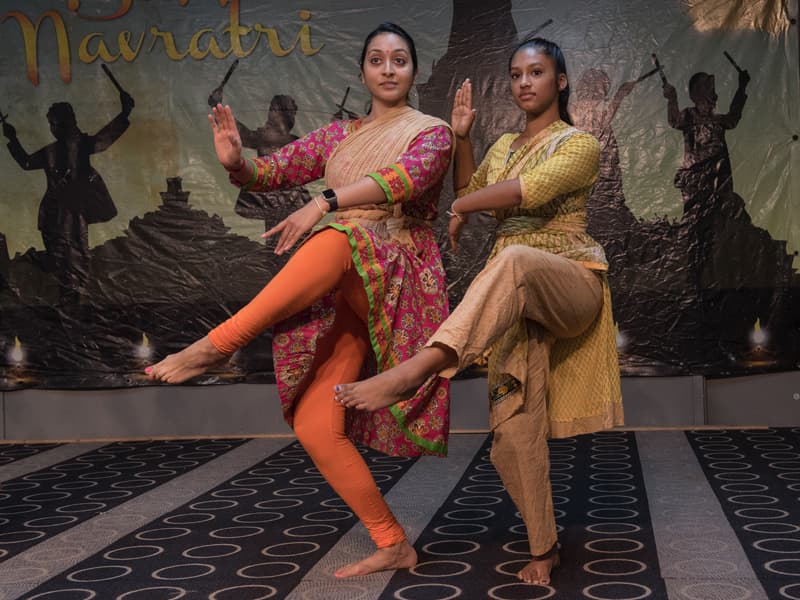
“The classical dance attire is very formal in terms of the work done on it – all the different jewelry, the hair and the makeup. When we have dress rehearsal we wear it, but not in regular practice. We keep it comfortable.”
Patki tries to give each child individual attention. “I think of my teacher and my dance classes. It’s a matter of great pride and respect when I think of what my guru taught me,” she said. “I know what I know because of my dance teacher.
“It’s a mental therapy for me. It takes me down memory lane.”
Patki said she expands her knowledge of the art by taking advantage of online programs. “You never really stop learning,” she said.
“Teaching is a responsibility. I want to give more and more to my kids.”


